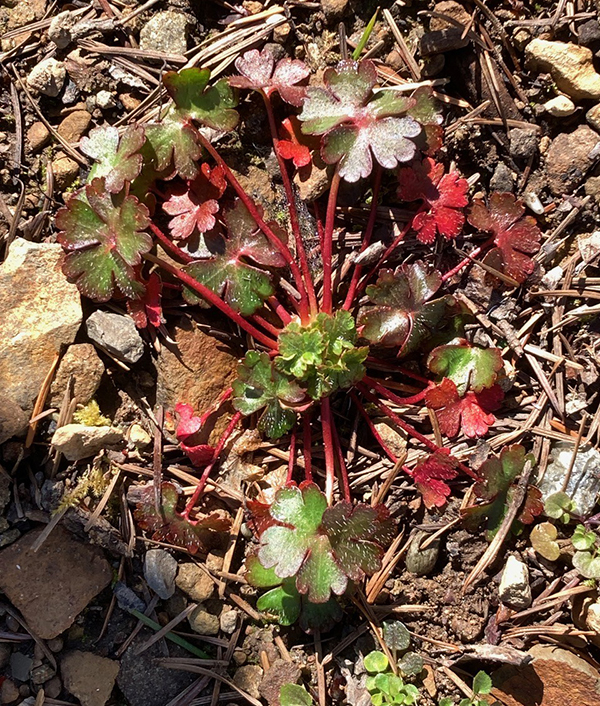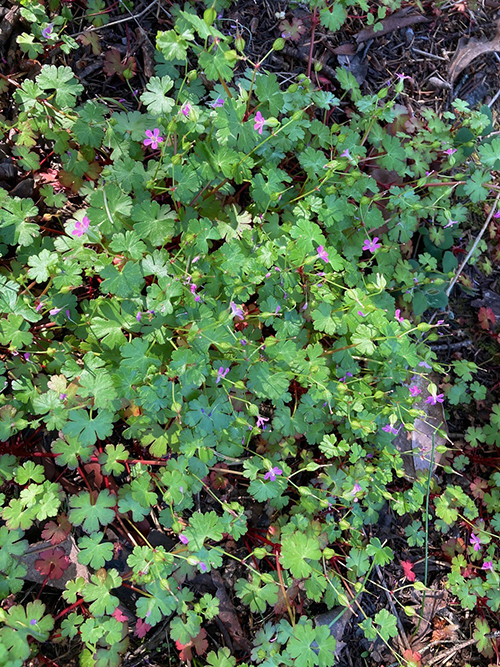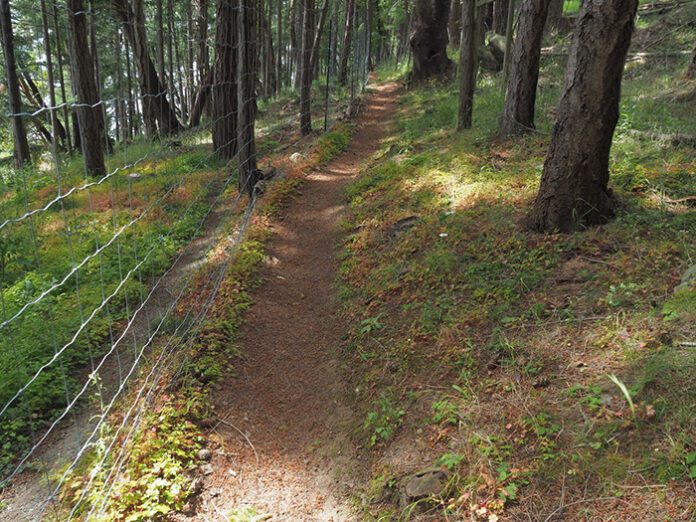While Salt Spring residents may be fully educated about the need to eradicate Scotch broom and gorse, a new destructive species has bloomed its way into the invasive species spotlight.
Shiny geranium (Geranium lucidum) has suddenly taken hold in a number of areas of Salt Spring — including on one part of my own property on Cranberry Road — prompting Transition Salt Spring Native Plant Stewardship Group (NPSG) and members to spend many hours of volunteer time pulling it from the ground and finding the best way to deal with it to prevent the seeds from travelling and sprouting elsewhere.
Jemma Green is the Islands Trust Conservancy (ITC) rep in the CRD-led Capital Region Invasive Species Partnership (CRISP) program. As an ITC protected areas manager, she works with private landowners to manage their conservation covenant lands. Green said she hadn’t seen shiny geranium on Salt Spring Island until last May.
“While doing a routine annual survey of one of our conservation covenants in the Reginald Hill area, I noticed an infestation of shiny geranium. It was growing on an unstable, rocky, southwest-facing slope, in both sun and shade, with very shallow soil. This plant seems able to grow in most conditions.”
Green said she and the landowners felt it could be an isolated incident that needed to be contained to protect the rest of the island, and spent several days last fall and this spring hand-weeding as many plants as possible, before they could go to seed.
Then just a few weeks ago she was contacted by islander Trish Cannon and others inquiring what to do about shiny geranium, “because it was all over their neighbourhoods and other neighbourhoods on the island.”
Cannon and longtime NPSG volunteer Cathy Young said there are extensive areas of the plant — which outcompetes native vegetation — in the Capital Regional District’s Quarry Drive park trail and on the trail between the former Vesuvius Inn and Margaret Drive. Trail edges have been cleared there for quite a distance. Other places it has been found besides the Reginald Hill area located by Green are North Beach Road, Arbutus Road, Morningside Drive, Cusheon Lake Road, in a Channel Ridge, on King Road south of Beaver Point Road, and along the trail in the north end of Ruckle Park.
“We’ve barely got a dent in it,” Cannon said about volunteer efforts to remove it from Ruckle Park.



The plant’s potential impact on rare Garry oak habitat is of particular concern.
I knew nothing about shiny geranium until Salt Spring Island Conservancy (SSIC) biologist Susan Hannon was visiting my property for a conservation site visit in late May. She spied it instantly in a small cleared area just off my driveway. I have since been alarmed to see how far it has spread from there and have spent a fair bit of time on removal attempts, but have much more work to do!
Fortunately, the plants have a shallow root system and are easy to pull out of the ground, and because they are annuals, it doesn’t matter if the entire root is removed. It’s the prolific seeds that must be kept from germinating.
Young adds that the plants are not hard to find. Their stems are bright red, and even the leaves turn red when the weather warms up or the soil is dry. Otherwise, the small five-petaled pink flowers look similar to those of other geranium species such as dove’s foot and herb Robert, and a couple of others. I could describe what the plant looks like with words, but the photos on this page tell the story better.
“It is quite happy to grow in almost all conditions of sun or soil and water, though it needs a minimum,” said Young. “Unusually, seedlings germinate after the first substantial fall rains, and persist over winter, to flower in April and May, when it may have three generations before the heat of summer turns leaves red, and almost disappear. Seeds are forcibly ejected up to six metres (20 feet), and are small but thankfully not tiny: at two millimetres, they are about the size of a sesame or tomato seed. Seeds can survive in the soil for two years, and spread on hikers’ boots, dogs, etc.”
Young is hoping that applying concentrated vinegar when the plants are small — in the fall or early spring — could kill them. A CRD Invasive Species Alert Sheet suggests mulching an infested area as another option for smothering young plants and suppressing the seed bank.
Young said the NPSG hopes to have an eradication workshop for the public sometime this fall.
She said disposal of the pulled plants is “problematic because it can’t be composted — the seeds continue to develop — but I’ve been ‘solarizing’ them: sealing them in a clear garbage bag and leaving it in the sun. Inside the bag it heats up tremendously, quickly turning them into dead brown plant matter, hot enough to kill the seeds.” Alternatively, they can be taken to the Blackburn Transfer Station and included in regular garbage, or to Hartland Road Landfill in bags labelled “Invasives.”
Cannon said the biggest challenge at the moment is the lack of hands available to do the hand-picking required. She hopes a grant may be acquired to hire people next year.
Islanders can also help prevent the spread of shiny geranium by checking their own property or public lands and following the advice for eradication.
“I want to make Salt Spring ‘shiny free,’” said Cannon. “If it gets out of control, we are never going to get on top of it.”

